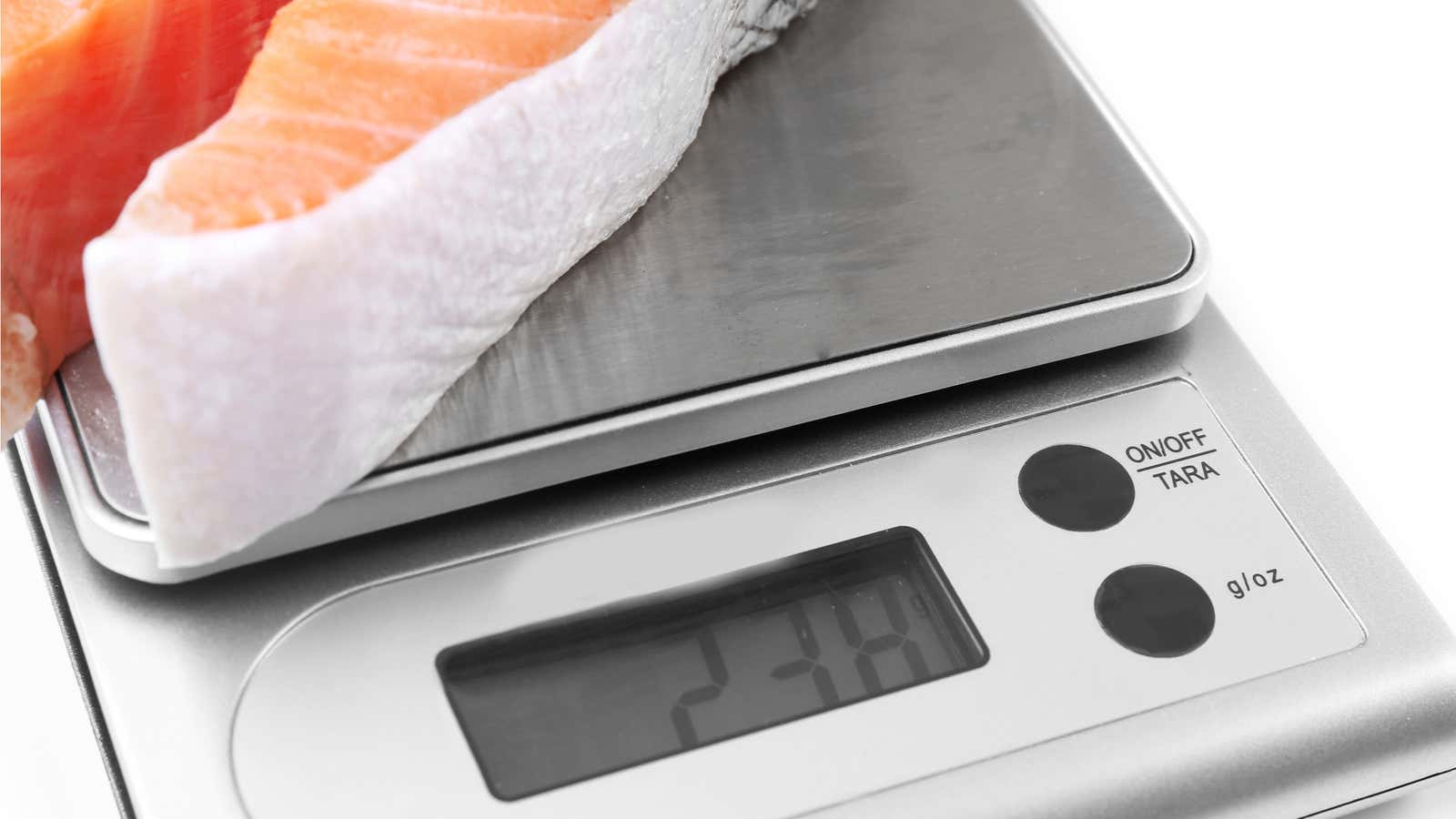The Right Way to Use a Scale to Track What You Eat

Tracking the calories and macronutrients in the food you eat can help you reach your nutritional goals, from weight loss to weight gain and trying to better control your protein and vitamin intake. To accurately assess this information, you will need a kitchen scale. But then what?
How to Use a Food Tracking Scale
When you register a portion of food in your application, it is difficult to determine by eye exactly how much you are actually eating. For example, if two tablespoons of peanut butter has 190 calories, how many are you putting on your toast? If you spread it thinly over one slice, you can get half that amount. If you spread it in a thick layer for two, you may eat twice as much as you think.
So you can put your toast on a plate on the scale, tare it (which resets the screen), then spread peanut butter on the toast and put it back to find out the weight. Instead of logging a two tablespoon serving, you can tell your app that you’re measuring in grams and that you’re eating 20 grams of peanut butter. (That’s a little less than the standard serving, which is 32 grams, so you’re actually eating 118 calories.) Got the idea?
Of course, you don’t have to weigh each piece of food down to the gram. If you weigh your toast three times in a row and get 18 grams, 21 grams, and 20 grams, you can simply log it as 20 grams every morning and you’ll be basically on the right track. A kitchen scale can help you learn how to measure portions and can also be useful for separating recipes. For example, I like to buy frozen chicken strips in large bags, so if I need four ounces of chicken in a dish, I will use a scale to weigh out four ounces. A kitchen scale is also handy for cooking , so it’s a good investment even if you don’t plan on keeping track of your macros long term.
What to do with foods that change weight when cooked
Some foods change weight when you cook them, including meats and grains, so should you weigh them raw or cooked? There is a short and long answer here.
Short answer: Your food app should have separate entries for raw and cooked foods. Use what is most convenient.
The longer answer is that weighing the raw product and using the raw weight input is usually more accurate. For example, if you fry a chicken thigh, some of the moisture from the meat will evaporate during cooking, and some will leak out. This is why overcooked meat can be dry, and why there is often a puddle of liquid in the bottom of the pan when you take the dish out of the oven.
So the exact amount of water loss depends on how you cooked the chicken thigh. If you leave it in the oven for too long, it will lose more water. If you cook it in a sauce or soup, it will weigh more than a fried thigh once cooked, not least because when you put it on the scale it’s probably still dripping with sauce.
The opposite happens with something that starts out dry, like rice, and absorbs water as it cooks. Cooking differences can affect how much a serving of rice weighs by the time you finish cooking it.
To be clear, the nutritional value of meat or rice does not change during cooking (or at least not enough to worry about). Only the amount of water in it changes. So I weigh my food before cooking and know that by the time I eat it, it still contains the same amount of calories, protein, and so on.
To be honest, I don’t even weigh food all the time. If I buy a pound of ground beef and want to make four servings of chili, I will record each serving as containing four ounces (a quarter of a pound) of raw ground beef.